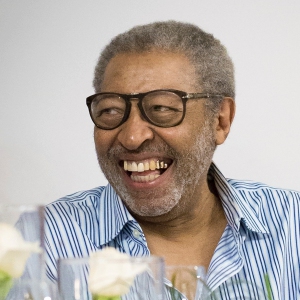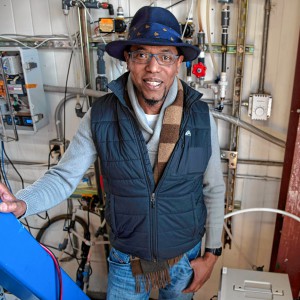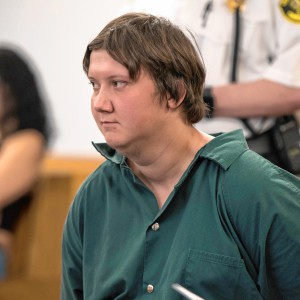Commissioner: Emergency ending, but it’s ‘not the end of COVID’
| Published: 05-11-2023 2:55 PM |
BOSTON — It can be difficult to grasp all at once a sense of how dramatically the world seemed to change in March 2020.
Now that the public health emergency order in Massachusetts has ended, as of Thursday, state health officials say the road out of the formal crisis declaration will be less jarring than the way it began.
“What will not be different is that people should still get vaccinated and stay up to date on their COVID-19 vaccines. People should continue to look around their communities and understand how they can protect themselves in ways that they may want to layer in prevention strategies like masks and testing,” said Department of Public Health Commissioner Robbie Goldstein. “We as a department will continue to be here to support people on May 11, May 12, May 13, and far beyond that to make sure that they have what they need to protect themselves.”
“This is not the end of the pandemic. This is not the end of COVID. This is the end of an emergency phase of COVID-19,” he later added.
In the three years since Gov. Charlie Baker declared the emergency, there have been more than 2 million confirmed cases and 22,602 confirmed deaths from the virus. The expiration also ended at the federal level on Thursday.
The formal change in status will rescind a statewide requirement for all providers and visitors to mask up in health care settings such as hospitals.
As the state prepares for the shift, the Healey administration will require facilities to develop “proactive” plans for reviving COVID-19 prevention strategies — potentially including mask mandates — if warning lights begin flashing again, Goldstein said.
Goldstein did not outline any explicit threshold or trend that would trigger state action, saying that the department wants hospitals and other facilities to “make local decisions” based on the circumstances they face. Health care facilities must also continue supplying masks to staff, patients and visitors who want them.
Article continues after...
Yesterday's Most Read Articles
He described a sharp contrast between the current public health outlook and the worst days of the pandemic. Some hospitals have recently reported zero new COVID-19 cases for the first time since the crisis began, Goldstein said, and the number of new cases tracked per day has dropped from roughly 23,000 at the peak to less than 100 now.
“We’re in a much different place with COVID-19, and at this moment, if we’re looking at the risk of COVID-19 transmission, even in a health care setting, the risk is extremely low,” Goldstein told reporters. “Bringing the mask mandate down is following the science and the data that are available. That may not be the case in a month or two or three, which is why we’re asking for proactive plans.”
Goldstein said Massachusetts is the last state with a universal mask mandate still in place inside health care facilities, adding that other areas have not seen substantial impacts on COVID transmission or hospitalizations in the wake of shifting their policies.
Several major health care providers including Mass General Brigham and Beth Israel Lahey have already announced their plans to lift mask requirements in alignment with the end of the state’s public health emergency.
The looming end to the health care facility mask mandate drew pushback from some policymakers and health care advocacy groups. Members of the Coalition for Health Equity said Tuesday that the DPH has “essentially abandoned immunocompromised, vulnerable and elderly residents of the commonwealth, and told them you are on your own.”
Rep. Thomas Stanley and Sen. Patricia Jehlen, who chair the Legislature’s Elder Affairs Committee, wrote to Goldstein in late April urging DPH to keep a masking requirement in place in health care settings “at least until a time when the rate of booster utilization increases to a higher level.”
“Even with the advent of lower caseloads statewide, we believe it is imperative to protect the most vulnerable among us as well as the frontline workers who are already in short supply,” they wrote. “Though 97% of Massachusetts residents have received at least one dose of a vaccine, only 29% have taken the current bivalent booster.”
Goldstein also praised the DPH’s COVID-19 data dashboard as “one of the most robust” in the nation, calling it arguably “better than what we have for the federal level.”
That data reporting will likely undergo some changes in the coming months, Goldstein said, largely based on changes in how hospitals and local sites conduct tests and report cases.
One major area that will remain unchanged, at least for a while longer, is access to therapeutic treatments for COVID-19, added DPH Bureau of Infectious Disease and Laboratory Science Medical Director Larry Madoff.
“Therapeutics will continue to be provided for free by the federal government, both to the state and to individuals who can get them in pharmacies from their provider,” Madoff said. “Eventually, that also will become commercialized, and we’ll have to see what those changes look like. We’re going to make every effort to make sure that therapeutics remain available and easy to obtain for everyone.”
Pre-pandemic routines have returned in many sectors of the state. COVID-related capacity limits are a thing of the past. Unmasked crowds are common in many public areas, both indoors and outdoors. Businesses have long since reopened, even if some have found that their employees prefer to continue working remotely.
“There was a period where there was a lot of fear and where there was frankly a good reason to be in fear — there were a lot of hospitalizations and deaths. And we’re past that,” Madoff said. “I think the end of the emergency means just a few things are changing, and I think we’re telling you that most things are staying the same after the end of the public health emergency.”

 William Strickland, a longtime civil rights activist, scholar and friend of Malcolm X, has died
William Strickland, a longtime civil rights activist, scholar and friend of Malcolm X, has died Advancing water treatment: UMass startup Elateq Inc. wins state grant to deploy new technology
Advancing water treatment: UMass startup Elateq Inc. wins state grant to deploy new technology New Realtor Association CEO looks to work collaboratively to maximize housing options
New Realtor Association CEO looks to work collaboratively to maximize housing options Northampton man will go to trial on first-degree murder charge after plea agreement talks break down
Northampton man will go to trial on first-degree murder charge after plea agreement talks break down 
